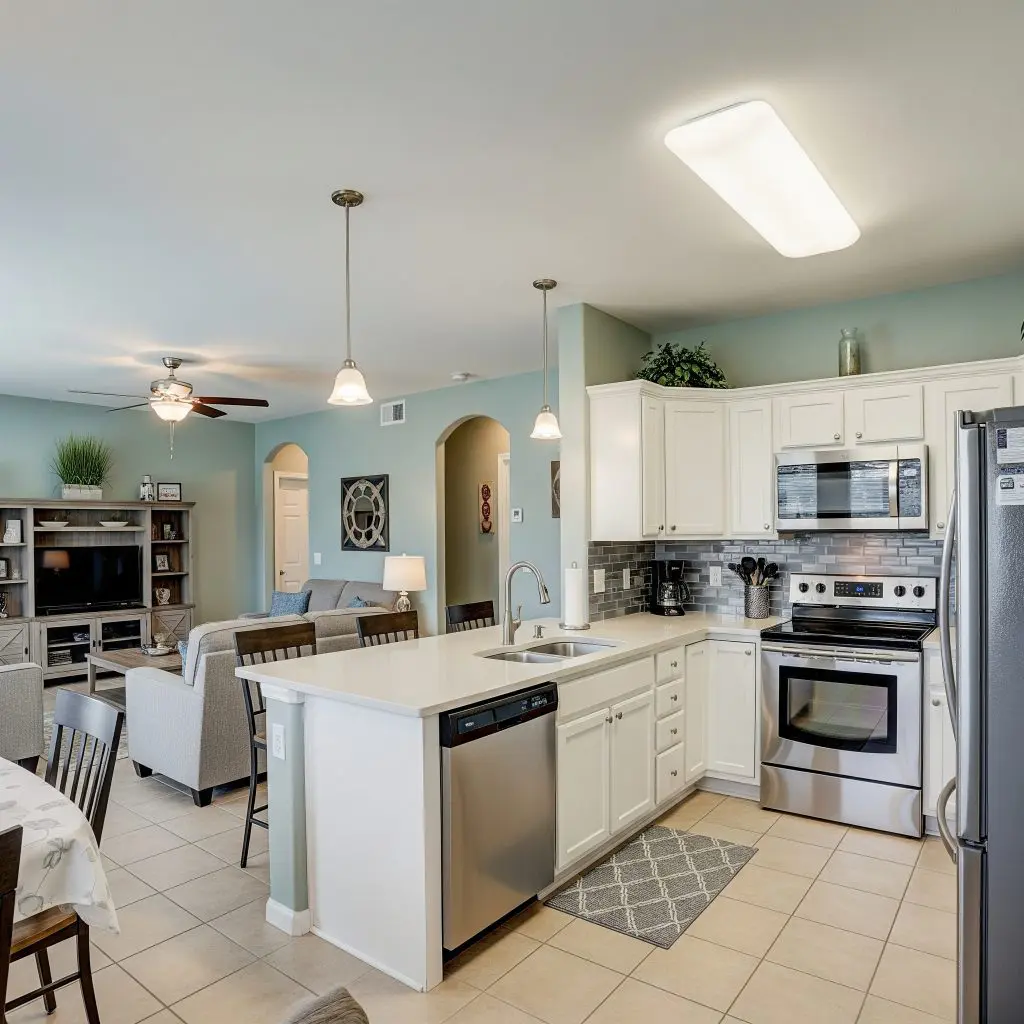Unlocking Profits: Ohio’s 2025 Fix and Flip Real Estate Opportunity
Ohio remains one of the best states for fix and flip investors in 2025, with typical net profits ranging from $38,000-$65,000 per project and abundant undervalued inventory: Recent market data shows Ohio flipping profits outpacing the national average as investors leverage affordable entry prices and steady buyer demand in hotspots like Cleveland, Columbus, and Cincinnati. With increased migration into the Midwest, low unemployment (3.7%), and stable local economies fueling growth, flipping in Ohio is primed for both beginners and seasoned professionals looking to scale their portfolios.
- Unlocking Profits: Ohio’s 2025 Fix and Flip Real Estate Opportunity
- Ohio Real Estate Market 2025: Stats & Trends for Investors
- How to Succeed Flipping Houses in Ohio: Essential Strategy Walkthrough
- Property Types to Flip in Ohio: What Works Best in 2025?
- The Best ZIP Codes & Neighborhoods: Ohio Flip Hotspots
- Ohio Fix and Flip Financing: Hard Money & Private Loans
- Step-by-Step Process: How to Fix and Flip Houses in Ohio Like a Pro (12 Steps)
- Real Ohio Flip Success Story: 2025 Example
- Ohio Flipping Pitfalls to Avoid in 2025
- Get Started: Your Next Ohio Flip Starts Here
Ohio Real Estate Market 2025: Stats & Trends for Investors
- Median sale price (statewide): $229,500 (up 5.1% YoY)
- Median days on market: 24 days (down from 32 days in 2024)
- Undervalued listings (distressed/REO): Approx. 1,850 (Jan–May 2025)
- Typical rehab costs (per 1,500 sq ft home): $38,000–$65,000 (urban), $30,000–$52,000 (suburban/rural)
- Construction material price update: Up 3% YoY, but labor is stable
- Ohio average flipping ROI (2025): 21.6% vs. national average 18.9%
Ohio’s blend of affordable housing, strong end-buyer demand, and moderate rehab costs makes its urban metros and select suburbs prime territory for healthy profit margins on flips. Compared to pricier coastal markets, entry points under $160k are common, with fewer cash-rich institutional buyers crowding out individual investors.

How to Succeed Flipping Houses in Ohio: Essential Strategy Walkthrough
1. Proven Step-by-Step Fix & Flip Methodology
- Target acquisition: Focus on distressed, estate, or auction homes 30-40% below local ARV
- Smart Offer: Use the 70% Rule: (ARV x 0.70) – Rehab = Max Offer
- Detailed Inspection: Walkthroughs with a contractor to itemize repair costs; budget a 10% contingency
- Due Diligence: Validate clean title, check unpaid liens/taxes, confirm no major permit violations
- Cash vs. Financing: Hard money (rates 9–12.5%) or trusted private lenders
- Renovation Management: Timeline for cosmetic flips: 5-6 weeks; full gut jobs: 10-12 weeks
- Quality Control: Schedule key city inspections (especially in Cleveland, Columbus, Toledo, Cincinnati)
- Finishing Touches: Modern fixtures + curb appeal = higher ARV in Ohio’s buyer-driven market
- Strategic Listing: Staged property, professional images, smart bidding strategy
- Tactical Exit: Price slightly below new-build comps, aim for rapid resale (DOM < 15 days in hot zips)
Ohio Fix and Flip Example: Key Numbers
- Purchase price: $121,000
- Renovation: $44,000 (full cosmetic + kitchen/bath refresh)
- Total cash in: $165,000 (inc. closing, lender fees, reserves)
- ARV: $229,000
- Sale price (realized): $232,000
- Gross margin before holding costs/commissions: $64,000
- Net profit after costs: $41,300 (23.4% ROI on cash invested, 125-day total cycle)
Hard money lending in Ohio (2025): 9–12.5% interest, 1–2.5 points origination, 65–85% LTC/ARV, no prepay penalty in most cities.
Need capital? GHC Funding offers flexible funding solutions to support your business growth or real estate projects. Discover fast, reliable financing options today!
Test Your Expertise: The Complexities of the 1031 Exchange

As a sophisticated real estate investor, you understand that the 1031 Exchange is a cornerstone strategy for tax deferral and wealth accumulation. But beyond the basics, the intricacies of the 1031 Exchange rules can pose significant challenges. This quiz is designed to test your in-depth knowledge and highlight critical nuances that separate casual investors from true experts in 1031 Exchange transactions.
Instructions: Choose the best answer for each question.
⚡ Key Flexible Funding Options
GHC Funding everages financing types that prioritize asset value and cash flow over lengthy financial history checks:
-
Bridge Loans: These are short-term loans used to "bridge the gap" between an immediate need for capital and securing permanent financing (like a traditional loan or sale). They are known for fast closing and are often asset-collateralized, making them ideal for time-sensitive real estate acquisitions or value-add projects.
-
DSCR Loans (Debt Service Coverage Ratio): Primarily for real estate investors, these loans are underwritten based on the property's rental income vs. debt obligation ($\text{DSCR} = \text{Net Operating Income} / \text{Total Debt Service}$), not the borrower's personal income or tax returns. This offers flexibility for those with complex finances.
-
SBA Loans: The Small Business Administration (SBA) guarantees loans offered by partner lenders. While providing excellent terms (long repayment, lower rates), the application process is typically slower than private/bridge funding, often making them less suitable for immediate needs. SBA eligibility heavily relies on the DSCR metric for repayment assessment.
🌐 Learn More
For details on GHC Funding's specific products and to start an application, please visit their homepage:
The Ultimate DSCR Loan for Rental Property Quiz

Are you looking to expand your real estate investment portfolio? A DSCR loan might be the perfect tool to help you achieve your goals without relying on traditional income documentation. Test your knowledge with this quiz to see if you're ready to master the intricacies of a DSCR loan for rental property.
Property Types to Flip in Ohio: What Works Best in 2025?
- Single-Family Homes: Highest volume/fluid resale. Focus on 3BR/2BA 1100–1800 sq ft homes near good schools.
- Condos & Townhomes: Active in Columbus, Cincinnati, and Cleveland’s urban cores. Beware HOA restrictions and flip fees; success with 2BR/2BA units under $130k pre-reno.
- Small Multi-Family: Duplexes (esp. 1920s–1950s) in Cleveland, Akron, Dayton. Potential: buy $98–130k, $40k rehab, $210k ARV, appeal to both retail and investor end-buyers.
- Ideal Condition: Cosmetic distress, outdated kitchens/baths, roof/mechanicals at midlife, curb appeal issues, solid foundation (avoid homes with major structural/foundation problems unless experienced).
The Best ZIP Codes & Neighborhoods: Ohio Flip Hotspots
- 43206 (Columbus, German Village): Buy: $158k–$205k | ARV: $285k–$330k
- 44105 (Cleveland, Slavic Village): Buy: $68k–$110k | ARV: $140k–$175k
- 45424 (Dayton, Huber Heights): Buy: $109k–$135k | ARV: $189k–$220k
- 45215 (Cincinnati, Reading): Buy: $99k–$140k | ARV: $172k–$210k
- 44111 (Cleveland West Park): Buy: $115k–$150k | ARV: $180k–$240k
- 43230 (Gahanna/NE Columbus): Buy: $176k–$225k | ARV: $270k–$330k
- 44312 (Akron, Springfield): Buy: $88k–$125k | ARV: $155k–$180k
Development hotbeds: Hilliard (Columbus), Tremont (Cleveland), Oakley (Cincinnati), and Worthington (Columbus North)
Contractor price range (2025): General contractor labor $45–$65/hr; electricians $95/hr; plumbers $110/hr; major permit fees typically $450–$850 per full flip, but check municipal web portals for updates.
✅ Small Business Resources
-
SBA – Small Business Administration
https://www.sba.gov - SCORE Mentors (Free Mentoring & Workshops)
https://www.score.org - Small Business Development Centers (SBDC)
https://americassbdc.org
Are You an SBA Real Estate Loan Expert?

Test your in-depth knowledge on using SBA Loans for owner-occupied commercial Real Estate acquisition. These questions delve into the critical details that can impact your business's growth and financial strategy.
Many Ohio municipalities (esp. Cuyahoga County) are vigilant about point-of-sale (POS) inspections—ensure compliance to avoid costly delays!
Ohio Fix and Flip Financing: Hard Money & Private Loans
- Do Hard Money Ohio – 10–12%, up to 85% LTC; no FICO minimum
- Raven Lending – 9.25–11.5%, max 70% ARV, flexible on credit history
- Longhorn Investments – 9.5–11%, 1.5 points; quick approval; covers up to 100% rehab
- RCN Capital (Ohio Branch) – 10–12%, 1–2 points, fast close
- Connect Invest (private network) – 9–14%, best for repeat flippers with established record
✅ Real Estate Investor Resources
-
AirDNA (Short-Term Rental Data)
https://www.airdna.co - Rentometer (Rent Comps)
https://www.rentometer.com - Zillow Research & Data
https://www.zillow.com/research
DSCR Loan IQ Quiz!

Test your knowledge of Debt Service Coverage Ratio (DSCR) loans!
Ohio’s private money scene is robust: Check out groups like Central Ohio Real Estate Entrepreneurs (COREE), Cincinnati REIA, and Out of State Investor (Cleveland).
Loan-to-cost expectations: Most hard money lenders will fund 80–85% of purchase and 100% of renovation, but require closing reserves. Typical terms: 12-month balloon, no prepayment penalty, interest only monthly. Minimum FICO often waived for experienced flippers.
Step-by-Step Process: How to Fix and Flip Houses in Ohio Like a Pro (12 Steps)
- Daily scan of MLS, Zillow, and auction platforms for distressed listings
- Quick “drive by” analysis and initial repair estimate
- Scheduled walkthrough with stager or contractor partner
- Submit competitive, contingency-filled offers—negotiate hard
- Order full title report, check municipal compliance, review taxes/liens
- Finalize scope of work and formal bid from contractor
- Secure hard money or private funding—submit lender docs early
- Sign purchase contract, close escrow (7–21 days)
- Pull necessary city/county permits; greenlight demo & construction
- Weekly project check-ins; milestone-based draws with lender
- Stage and professionally photograph finished property
- List on MLS; run open houses and negotiate top-dollar sale
Due Diligence Checklist: Confirm mechanicals (HVAC, electric, plumbing), check roof (age/leaks), test foundation (horizontal cracks bad!), verify ARV with three recent comps, budget for 3% overages, validate new code requirements (esp. lead paint and smoke detectors in Cuyahoga/Franklin/Hamilton counties).
Real Ohio Flip Success Story: 2025 Example
- Location: 44109 (Cleveland Old Brooklyn)
- Purchase Price: $97,500 (off-market estate sale)
- Rehab: $49,400 (kitchen, 2 baths, vinyl plank, roof, HVAC, paint, landscaping)
- Holding & Finance: $7,900 (interest, utilities, insurance)
- Sale Price: $189,000 (listed 8 days, closed in 29)
- Total Timeline: 117 days
- Net Profit (after commissions/closing): $25,900
Market timing insight: Properties listed mid-March through July sell 18% faster across Ohio’s top markets, with higher likelihood of multiple offers. Don’t miss the “spring buyer wave.”
Ohio Flipping Pitfalls to Avoid in 2025
- Skipping point-of-sale or rental inspections (mandatory in Cleveland, some suburbs)
- Underestimating foundation/drainage repair costs—commonly $10,000–$18,000 if needed
- Over-renovating—avoid luxury finishes in C class neighborhoods
- Failing to account for new lead paint rules in pre-1978 homes (required disclosure and abatement)
- Poor contractor vetting; get references and require lien waivers
Get Started: Your Next Ohio Flip Starts Here
Ohio offers a balanced fix and flip landscape with broad entry points and steady profits—if you use local data and professional systems. Connect with a knowledgeable agent, build a trusted contractor network, and leverage the advantages of quick-to-close hard money lending. For immediate opportunities, analyze MLS in the ZIP codes above, attend a local REIA, and run your first deal through the 70% Rule with a proven exit plan.
Ready to turn the Ohio market momentum to your advantage? Bookmark this guide, meet with a lender, and walk your first distressed property this week!
